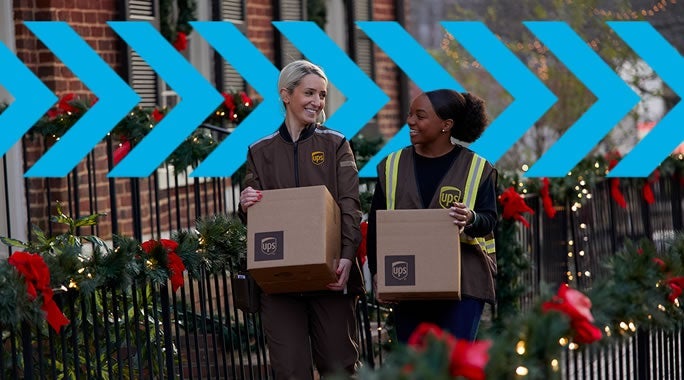BLOG POST
Understanding and Managing UPS Peak Shipping Season Surcharges and Fees

Reading Time: 3 minutes
Peak shipping season can feel like peak fee season for many small and mid-size businesses (SMBs). However, while some surcharges are a unavoidable especially during the high-volume holiday shipping season, there are ways to lessen their sting. The truth is, SMBs overspend on their parcel shipping by about 13% each year, often on unnecessary peak season fees and surcharges.1 That doesn't have to be you, though!
In this article, we'll be taking a closer look at some of the most common peak season surcharges and fees assessed by UPS® and other parcel carriers, as well as the best ways to manage (or even eliminate) them. Armed with this knowledge, you can head into peak season with improved shipping processes and an eye toward minimizing the impact surcharges and fees have on your bottom line. Sound too much like a holiday miracle? Just read on!
What are the most common UPS peak season surcharges?
While there are myriad fees and surcharges that can hit parcel shipments throughout the year, certain ones are especially common around the busy holiday shipping season. They include:
Peak/high-demand surcharges
Thes surcharges are imposed on some shipments and/or high-volume shippers frequently during the peak season. In addition, they now commonly extend well into January, and can also be applied during other times of unusual demand. Peak and high-demand surcharges can also be put into effect indefinitely for high-demand shipping lanes, such as from China to the U.S.
While there's often no way to avoid these surcharges, you can prevent costly surprises by budgeting for them ahead of time and building their costs into the pricing of your products. It's wise to stay up-to-date on UPS and other carriers' peak and high-demand surcharges, especially as the holidays approach.
Additional handling surcharges
You can be hit with these charges for oversized, irregularly shaped, overweight or improperly packed parcels. These fees fluctuate throughout the year, and can be significantly higher during the holidays and other high-demand periods.
Knowledge is king when it comes to avoiding these surcharges. Carefully review the UPS size limits, weight limits and other packaging regulations to ensure that your parcels are compliant. It's also a good idea to pay close attention to carrier holiday-related announcements to ensure you're always working with current information.
Fuel surcharges
Fuel surcharges fluctuate based on fuel prices, which in turn are partly based on demand. Since fuel is usually in higher demand during peak shipping seasons, fuel prices (and their accompanying surcharges) can increase.
This is another surcharge that can't really be avoided, but should be factored into your shipping budget. Regularly monitor fuel surcharge rates during peak season and adjust the costs you pass along to customers accordingly.
Residential delivery surcharges
This fee is imposed whenever a package needs to be delivered to a place of residence instead of a place of business. Residential deliveries introduce multiple logistical and profitability challenges for carriers, which are offset by this surcharge.
There are several ways to avoid residential delivery surcharges, including sending packages to a UPS Access Point®, or shipping via UPS Ground Saver®, which doesn't include this UPS fee.
Dimensional weight pricing
Dimensional (or DIM) weight refers to how much space a parcel occupies relative to its actual weight. The classic example here is a box of ping pong balls - large, but light for its dimensions.
To minimize DIM weight charges, carefully consider the size of the box your parcel will be shipped in and use the smallest practical package. Using standard-shaped packaging whenever possible will also help you avoid DIM weight pricing.
Be a peak shipping season parcel pro
Peak shipping season doesn't have to equate to peak shipping surcharges or stress levels. By ensuring you and your team are up to speed on the most common UPS surcharges and fees during the holidays, you can keep costs (and tempers!) under control.
If you have additional questions about holiday fees and surcharges, or any other part of peak shipping season, you can rely on the experts at Worldwide Express. As the nation's largest non-retail reseller of UPS services, we've helped tens of thousands of SMBs just like yours navigate peak season and every other shipping season of the year. We provide our SMB partners the scale and savings usually enjoyed by much larger businesses, paired with personalized service and powerful technology. If you'll forgive a holiday shipping pun, we're the complete package!
Request a complimentary, custom shipping consultation with one a Worldwide Express shipping expert today.
1 Freightwaves.com. Commentary: 7 Ways Small Business Can Cut Parcel Shipping Costs - January 2021






